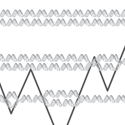Nick Rhind studied math and biology as an undergraduate at Brown University and found the biology a lot easier. He went on to do his graduate work at U.C. Berkeley, working on the genetics of sex-determination in the round worm C. elegans. For his postdoctoral assignment, he moved to the Scripps Research Institute to study cell-cycle regulation in fission yeast with Paul Russell. There, he became interested in how and why cells regulate the cell cycle in response to DNA damage. He has continued with that line of research in his own laboratory at the University of Massachusetts Medical School, focusing recently on the regulation of DNA replication by DNA damage. This work has led to an interest in more general questions about the regulation of DNA replication and to a return to his mathematical roots.



